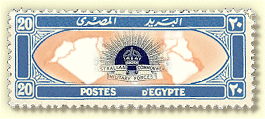

 On 15 September 1939, Prime Minister Robert Menzies announced the formation of the Second Australian Imperial Force (AIF). This was an expeditionary force, which initially consisted of 20,000 men organised into an infantry division. Recruitment for the AIF was initially slow, but one in six men of military age had enlisted by March 1940 and there was a huge surge of volunteers after the fall of France in June 1940. Men volunteered for the AIF for a range of reasons, with the most common being a sense of duty to defend Australia and the British Empire. The 6th Division was formed during October and November 1939 and embarked for the Middle East in early 1940 to complete its training and receive modern equipment after the British Government assured the Australian Government that Japan did not pose an immediate threat It was planned that the division would join the British Expeditionary Force in France when its preparations were complete but this did not eventuate as France was conquered by Germany before the division was ready. A further three AIF infantry divisions (the 7th Division, 8th Division and 9th Division) were raised in the first half of 1940 as well as a corps headquarters (I Corps) and numerous support and service units. These units were sent to the Mediterranean and Middle East where they formed a key part of the Commonwealth forces in the area. The three AIF infantry divisions sent to the Middle East saw extensive action, as did the RAAF squadrons and warships in this theatre. The Australian Army first saw action in Operation Compass, the successful Commonwealth offensive in North Africa which was conducted between December 1940 and February 1941. The 6th Division relieved the 4th Indian Division on 14 December. Although the 6th Division was not fully equipped, it had completed its training it captured the Italian fortresses at Bardia and successfully tool Tobruk on 22 January. Following the fall of Tobruk the 6th Division pushed west along the coast road to Cyrenaica and captured Benghazi on 4 February. The 6th Division was withdrawn for deployment to Greece later in February and was replaced by the untested 9th Division, which took up garrison duties in Cyrenaica. The 9th Division was besieged in Tobruk between March and September being withdrawn on request of the Australian government however the 2/13th Battalion remained until December when the siege was lifted. Australian units remained in North Africa seeing action at El Alamein but on the entry of Japan into the war the troops were gradually transferred to the Eastern theatre, the 6th and 7th Divisions, returned to Australia in early 1942 with the 9th Division leaving Egypt for Australia in January 1943, ending the AIF's involvement in the war in North Africa.
|
|
|